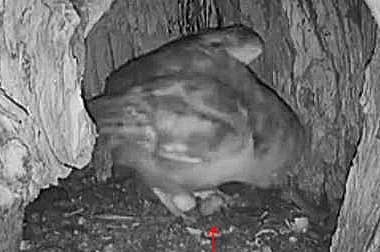Latest News and Updates from Audubon in California
California Condor. Photo: Scott Frier/USFWS
The California Water Resources Control Board yesterday heard a presentation from state officials on their progress toward meeting their goals for habitat restoration and dust control at the Salton Sea. According to an agreement completed late last year, the state must complete work on 500 acres by the end of the year, but there is little indication that it will reach even that modest goal.
Micheal Lynes, Audubon California's policy director, had this to say after the hearing:
"The deterioration of the Salton Sea continues, and the rate of progress on the Salton Sea Management Program (SSMP) is not keeping up with the rapidly changing conditions. We encourage the State Water Resources Control board to work closely with state officials to ensure that upcoming deadlines are met– including constructing 500 acres’ worth of projects at the sea by the end of 2018.”
Michael Cohen, senior associate at the Pacific Institute, added:
"While the state has taken some steps towards implementing the Salton Sea Management Program, the rate of the progress is not nearly enough to keep up with the sea's decline. It is imperative that the State Water Resources Control Board hold the state to its commitment to build habitat and dust control projects at the Salton Sea, this year.”
When Los Angeles was covered in wetlands. Interesting web gallery of photos showing expansive wetlands acros the Los Angeles Basin around what was then called the Ballona Lagoon.
California Secretary for Natural Resources John Laird issued a statement today regarding the Desert Renewable Energy Conservation Plan. Like Audubon California, he thinks it's a perfect lousy idea to reopen negotiations on the landmark conservation deal.:
“The 2016 Desert Renewable Energy Conservation Plan is the result of over eight years of collaborative effort and public participation involving the California Energy Commission, California Department of Fish and Wildlife, the U.S. Bureau of Land Management, and the U.S. Fish and Wildlife Service, as well as local governments, renewable energy companies, environmental groups, businesses, and citizens. Hundreds of meetings, thousands of public comments, and deep commitment of public agencies generated a Plan that provides for renewable energy production from public lands while also protecting the incredibly rich biological, cultural, recreational, and many other values of the California desert.
The Plan itself allows for modifications and course corrections, and due to the combined input, resulted in zero lawsuits. Reopening the plan is a waste of time and resources that will result in uncertainty, delay, and litigation. Reopening will stall renewable energy projects on public lands and impose major new costs on stakeholders without benefit. Instead, BLM should work proactively with the state, local governments, tribal leadership, and other stakeholders to implement the plan effectively and resolve issues with implementation as they arise.”
Fascinating study shows that California used to have a unique form of raven, but that it has long been bred out of existence. It lives on, however, in the DNA of our Common Ravens.
A new study shows that sea-level rise driven by climate change could swallow up many of the Pacific Coast's most important marshes in the next hundred years. But researchers say there's still time to do something about it. Audubon California is working hard to protect many of these areas, supporting Measure AA in the San Francisco Bay and restoring vital marshes in Sonoma Creek.

First egg hatches on Audubon Starr Ranch live nestcam: Last night saw the first egg hatching on the Audubon Starr Ranch live nestcam. According to Ranch Manager Pete DeSimone, this first chick should grow to full size and fledge in eight to eight-and-a-half weeks. Check out the live cam, and maybe you'll catch a glimpse.
Our newsletter is fun way to get our latest stories and important conservation updates from across the state.
Help secure the future for birds at risk from climate change, habitat loss and other threats. Your support will power our science, education, advocacy and on-the-ground conservation efforts.
Join the thousands of Californians that support the proposed Chuckwalla National Monument.